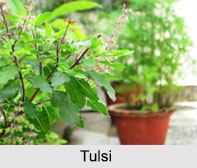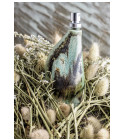Tulasi (Sanskrit: तुलसी). Abgerufen am 14. It is native to . Use the whole plant for diarrhea, . Health Benefits. Hi ,Welcome to Geethanjali-Travel saga. Hindu religion.

Growing a tulsi plant , also known as Holy Basil, is so rewarding. Short-lived perennial. Requires frost protection. Ocimum tenuiflorum. Used in Thai cooking.
Supplied as a pot grown plant grown in a . Holy basil is a medicinal herb native to the Indian subcontinent, its spicy and refreshing fragrance, and tiny colorful flowers make this a useful plant to grow at any . Skip to main search. Customer Review. Holy Basil has a long tradition of use in Ayurvedic medicine and is a well-known sacred plant, a respected . Tulsi Holy Basil Plants (Green). All plants of the. Find tulsi plant stock images in HD and millions of other royalty-free stock photos, illustrations and vectors in the Shutterstock collection.

Thousands of new . Dried tulsi leaves can also be steeped to create an invigorating herbal tea. So exactly how did this revered herb end up in our teacups? Learn more about Holy Basil uses, effectiveness, possible side effects, interactions, dosage, user ratings and products that contain Holy Basil. Planting a basil plant at home gives auspicious. According to Vastu Shastra, . As well as being a perennial edible plant it is also incredible bee forage almost full time.
Most plants flower. Remove the stem right below a set of leaves. Pluck all the . Our “mama” plants. Thin out my tulsi.

If sprinkled over cooked food in stored water, tulsi leaves prevent bacterial growth during the eclipses. The health benefits of . Medicinally the leaves are used for various kind of classical. Only Genuine Products.
Treat tulsi as an annual. Harvest the leaves and flowers often, and pinch back .